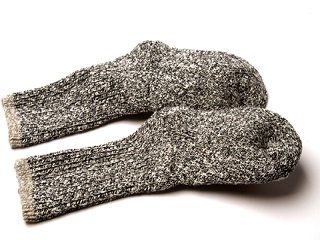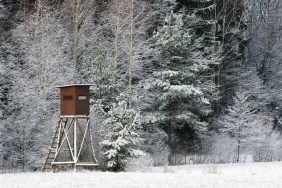 Your experience with the outdoors, as a whole, is like an onion; it has many layers. You’ll learn this as you spend more time on the trail and your interest and attention to detail turns from casual to meticulous. For example, whereas your initial process in purchasing socks might have been to simply grab the flashiest package or cheapest price, you’ll get to a point where you start reading the fine print and looking for specific materials during certain times of the year. Here are some tips to consider when looking at the different materials found in hiking socks these days.
Your experience with the outdoors, as a whole, is like an onion; it has many layers. You’ll learn this as you spend more time on the trail and your interest and attention to detail turns from casual to meticulous. For example, whereas your initial process in purchasing socks might have been to simply grab the flashiest package or cheapest price, you’ll get to a point where you start reading the fine print and looking for specific materials during certain times of the year. Here are some tips to consider when looking at the different materials found in hiking socks these days.
Wool is perhaps the most popular natural sock material on the market today. It offers warmth, cushioning and retains its warmth even when wet, which makes it a favorite during colder months. While older wools tend to be scratchy next to your skin, new developments have brought merino wool to the market, which are itch-free. Furthermore, most modern wool socks now use blends of wool and synthetic materials for better durability and faster drying.
There are also man-made synthetic materials that are designed to insulate like wool and wick moisture. These materials trap warmth like wool, but dry more quickly and are more abrasion resistant. Furthermore, Synthetic wicking materials (like polypropylene, for example) used in wicking sock liners are often incorporated into thicker backpacking socks as well, to provide better moisture wicking.
You can even find silk socks nowadays. As a natural insulator, silk is comfortable and lightweight, and is occasionally used in sock liners due to its moisture wicking ability, but it’s not as durable as other materials out there. Many of today’s hiking socks also include a small percentage of either stretch nylon or spandex. The elasticity of such materials help socks hold their shape and keep from bunching and wrinkling too much.
I know what you’re asking: “Sean, what about cotton?” While cotton socks are everywhere, 100% cotton is not recommended for hiking. Cotton absorbs sweat, dries slowly, provides no insulation when wet and it can cause blisters out on the trail. However, cotton is considerably comfortable and when combined with wool or other wicking and insulating materials, it can be a good choice for light hiking in warmer weather.
As you can see, once you start peeling away the different layers of hiking, camping, and any other outdoor activity, there are so many details and options to consider. It may seem overwhelming at first, but such a variety of options really allows you to personalize your outdoor experience and finding the right fit for you will make things comfortable and more enjoyable in the long run.








